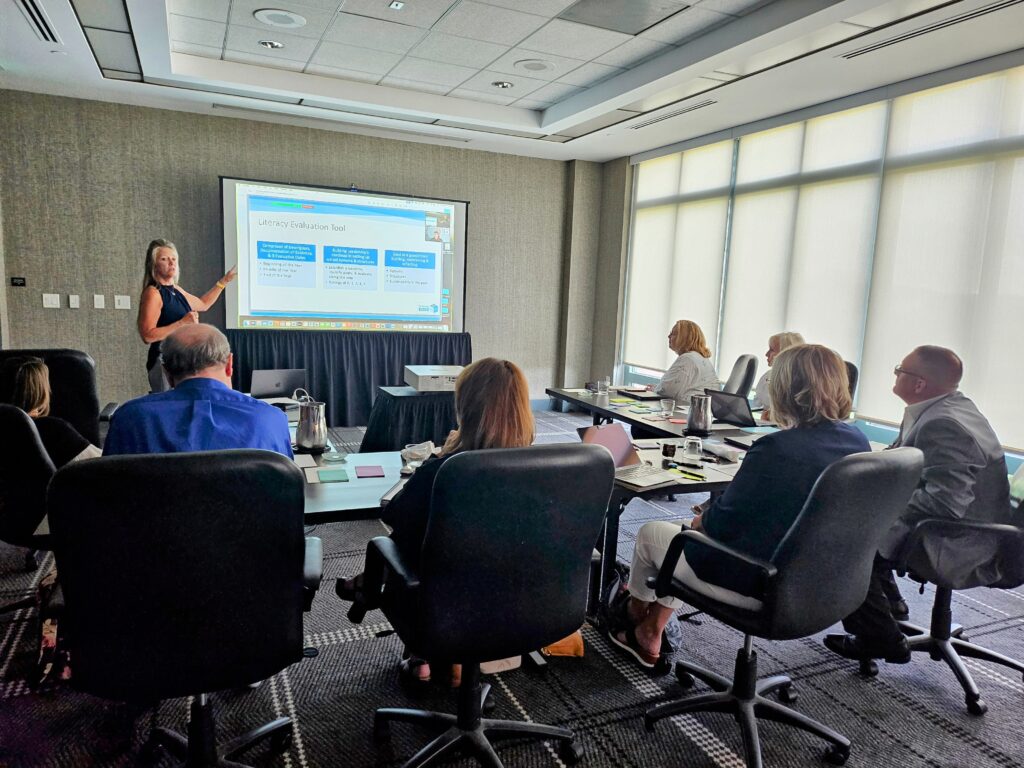Building Leadership Teams:
A building/school leadership team promotes two-way trust and open communication between administration and staff. This session guides administrators and teacher leaders through the steps of creating a Building/School Leadership Team. By creating a building leadership team, you create a shared-decision making process within your school culture. Research indicates that schools with a shared-decision making process have higher achievement outcomes than those that don’t.
Data Analysis:
Understanding the Subskills of Assessment: Often educators know how to give the assessment, and even how to interpret the results. What is often missed are considerations for the instructional implications and appropriate actions taken based on the data. This session addresses what the outcomes of a high-quality literacy assessment can inform a teacher about instruction and how to create an action plan.
Effective and Timely Feedback:
This professional development session delineates the roles and responsibilities of the coach and principal, how to enlist teachers into working with the instructional coach and the difference in instructional feedback that the coach provides and that the principal provides. This session also provides the research on quality professional development. Instructional Coaches will receive access to proprietary tracking forms to use when working with teachers. Principals will receive teacher feedback forms for their use. This session is also customizable to link observations and evaluation protocols to quality common evaluative measures such as Danielson/Marzano (and locally created) frameworks.
Building the Relationship Between Instructional Coach and Principals:
A quality relationship between the building principal and instructional coach can be one of the most rewarding relationships there is. Regrettably, this pairing can be fraught with potential disaster if not well planned and understood. This session provides principals and coaches with clear responsibilities, tools for communication and how to avoid the trap of “Asking mom or asking dad.”
How Did We End and Where Do We Begin?
When schools know and understand their data, prevention and intervention can begin on day 1 of the following school year. This session ensures that based on end-of-year data, schools have in place an appropriate schedule utilizing all resources, the necessary instructional materials to meet student needs and the required systems and structures in place to support and advance student achievement.



